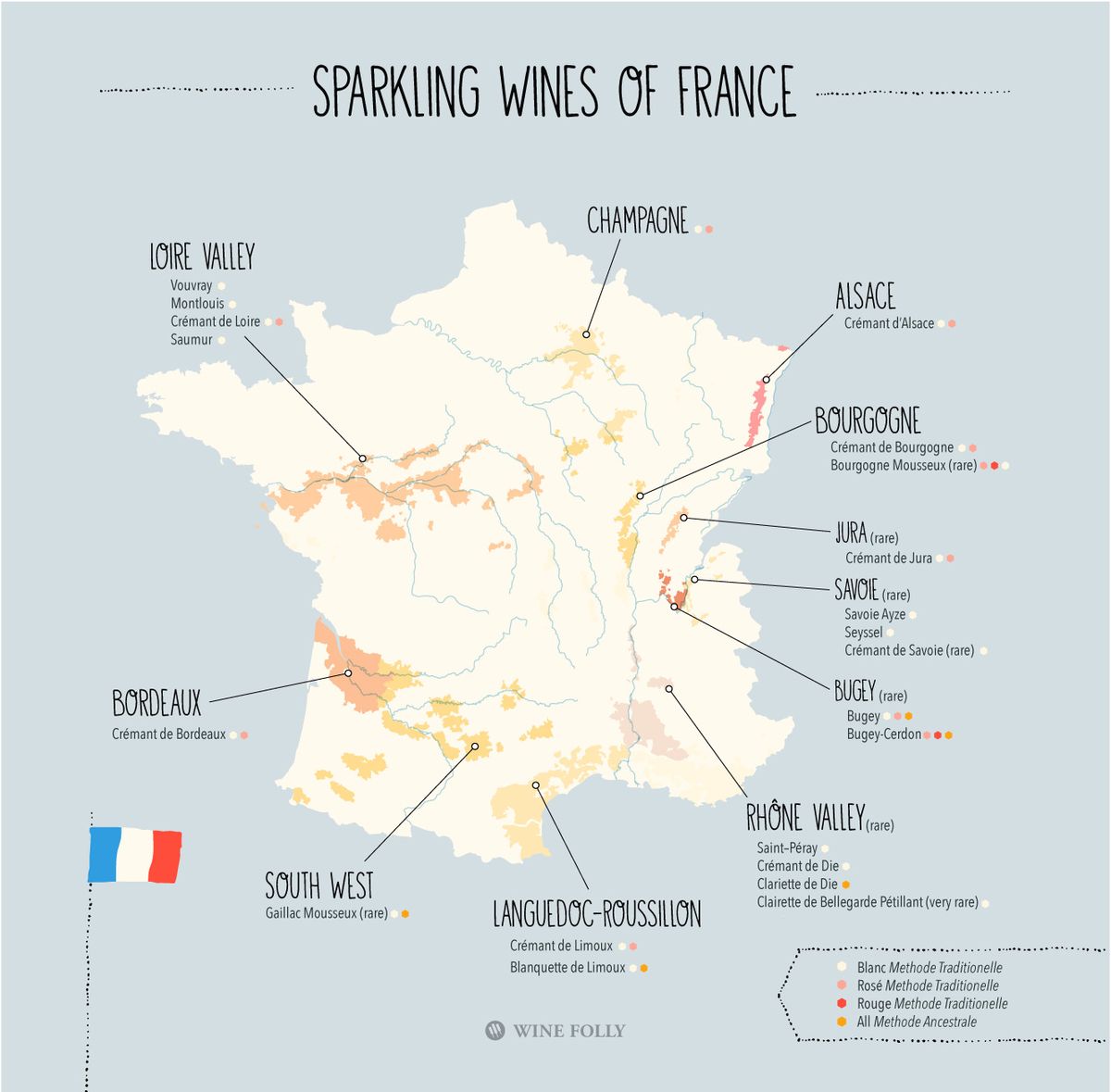Natural sparkling wines are becoming increasingly popular with wine lovers, thanks to their artisanal production methods and unique freshness. These wines, often called "Pét-Nat" (for Pétillant Naturel), offer an authentic and creative alternative to classic Champagnes and Crémants.
What is a natural sparkling wine?
1. An ancestral production method
Natural sparkling wines are made using the ancestral method. Fermentation begins in the vat and ends in the bottle, naturally creating bubbles without the addition of sugar or yeast.
- Key features :
- Light, natural bubbles.
- Rough and fruity taste.
- Often unfiltered, with visible deposits.
2. Difference from other sparkling wines
Unlike Champagne or Crémant, Pét-Nat does not undergo secondary fermentation in the bottle, nor is sugar added.
3. Organic and natural wines
Producers of natural sparkling wines often favor organic or biodynamic practices, guaranteeing environmentally-friendly wines.
Why are natural sparkling wines on trend?

1. An authentic, artisanal approach
Enthusiasts appreciate Pét-Nat for its artisanal production, far removed from industrial processes.
2. A variety of flavours
Each bottle of natural sparkling wine offers a unique experience thanks to natural variations in fermentation.
3. A symbol of conviviality
Their accessible, festive character makes them perfect for sharing.
4. Growing interest in natural wines
The natural wine movement, which favors minimalist practices, has contributed to the rise of Pet-Nat.
Top regions for natural sparkling wines

1. France
- Loire: The Loire is a hotbed of Pet-Nat, with grape varieties such as Chenin Blanc and Cabernet Franc.
- Languedoc: Here, producers explore native grape varieties for expressive sparkling wines.
2. Italy
- Handcrafted Lambrusco: Although often associated with sweet wines, dry Lambrusco is a sought-after Pet-Nat.
- Natural Prosecco: Some Prosecco producers are returning to ancestral methods for more authentic wines.
3. Other emerging regions
- Spain: Natural Cava is distinguished by its freshness.
- Australia: Young Australian winemakers experiment with local grape varieties and original Pet-Nats.
How to organize a wine tasting around Pét-Nat?
1. Choose a varied selection
Include natural sparkling wines from different regions and grape varieties to explore their diversity.
- Suggestions: A Chenin from the Loire, a dry Lambrusco and a red Pét-Nat from Languedoc.
2. Prepare your bottles
- Serve Pét-Nat slightly chilled, between 8 and 12°C.
- Shake lightly to integrate deposits if desired, or serve gently to avoid them.
3. Use appropriate lenses
Choose white wine glasses to concentrate the aromas while letting the bubbles express themselves.
4. Write down your impressions
During the tasting, take notes on aromas, bubble texture and possible pairings.
Food and wine pairings with natural sparkling wines
1. Light aperitifs
Pét-Nat pair perfectly with simple, fresh appetizers.
- Examples: Oysters, raw vegetables, vegetable dips.
2. Main courses
- White Pet-Nat: Ideal with grilled fish, sushi or mixed salads.
- Pét-Nat red: Pairs well with white meats, charcuterie or light spicy dishes.
3. Fruity desserts
A lightly sweet natural sparkling wine complements fruit-based desserts or light tarts.
- Examples: Apple pie, fresh fruit salad.
Mistakes to avoid with natural sparkling wines
1. Keep them too long
Pét-Nat should be drunk young, as their aromas and bubbles quickly lose their intensity.
2. Serve them too cold
A wine that is too cold masks its subtle aromas. Respect the recommended
serving temperature.
3. Compare them to Champagnes
Pet-Nats have their own identity and should not be judged by the standards of classic sparkling wines.
Trends in natural sparkling wines
1. Popularity with younger generations
Millennials are embracing Pet-Nat for its authenticity and respect for the environment.
2. Exploring forgotten grape varieties
The winemakers use indigenous grape varieties to create unique Pet-Nats.
3. Events dedicated to Pet-Nat
More and more festivals are showcasing these sparkling wines, offering opportunities for discovery.
Conclusion: a must for wine tasting
Natural sparkling wines represent a fascinating trend for sparkling wine lovers and wine tasters alike. Their artisanal production methods and unique flavors appeal to an ever-wider audience. Take the time to discover these sparkling treasures and organize a tasting to explore their diversity.
If you enjoyed this article, you may also be interested in "A complete guide to food and wine pairing for the festive season"!





